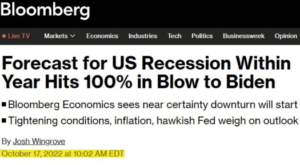Details Are Part of Our Difference
Embracing the Evidence at Anheuser-Busch – Mid 1980s
529 Best Practices
David Booth on How to Choose an Advisor
The One Minute Audio Clip You Need to Hear
Welcome, Grace!

We’re thrilled to welcome Grace Kreifels to our team as a Lead Advisor! With a strong foundation in evidence-based investing, Grace brings invaluable experience from her eight years at Dimensional and prior tenure at Vanguard. As a Certified Financial Planner (CFP®), her expertise and dedication to her craft will be a tremendous asset to our national client base. We look forward to seeing her make a lasting impact on our clients’ lives.
Beyond her professional strengths, Grace and her husband, Zach, recently welcomed their first child, a son named Riley—and parenthood has already been an incredible adventure for them. True to the spirit of many of our clients, Grace has a passion for the outdoors and enjoys hiking, backpacking, surfing, biking, skiing, and camping (they even took Riley on his first camping trip at just three months old!). As the daughter of a Delta pilot, Grace’s love for travel started young and has taken her to more than 30 countries, immersing her in diverse cultures and experiences.
Please join us in giving a warm welcome to Grace!
October Newsletter Intro
How 3 Simple Questions Help Us Serve You Better
At Hill Investment Group, it’s about more than just managing money—it’s about adding value to your life. That’s why we recently started asking three important questions at every client review meeting:
- What’s the most valuable thing we do for you?
- Is there anything we could be doing that we’re not?
- If someone needed our help, would you be comfortable introducing us?
These questions keep us focused on what matters most: your peace of mind, trust, and the lasting impact we can make together. We’ve been inspired by your answers, which often go beyond financial goals, showing us that trust, security, and partnership are what really count.
We had our own thoughts about the typical responses to the first question. Perhaps they would reflect the core elements of our service—evidence-based investment management, financial planning, or our Longview Analysis. While those certainly do come up, we’ve been deeply moved by how our clients describe the value we bring in their own words. From “I love not having to make decisions in this part of my life” to “I just don’t worry about money anymore,” the feedback has gone beyond the tangible aspects of our work. It’s given us a fresh perspective on what matters most to our clients.
The second question, “Is there anything we could be doing that we’re not?” has opened doors to opportunities for improvement. This question pushes us to listen more closely and serve more effectively. The responses have challenged us to think about the evolving needs of our clients and how we can better support them in ways we hadn’t considered.
Lastly, asking whether clients feel comfortable introducing us to others has been incredibly valuable. It’s a reminder that the trust we build doesn’t end with the clients we serve—it extends to their networks, too. When someone says, “Yes, I’d happily introduce you,” it’s a testament to the strength of our relationship and the impact we’ve had. It’s a reflection of the confidence our clients feel in us, and that’s something we deeply appreciate and never take for granted.
These three questions have become an essential part of our process, helping us stay connected to what’s most important: understanding our clients’ needs, adapting our services, and earning the trust that leads to long-term partnerships.
As we continue to ask you these questions in the months ahead, we’re excited to see where the answers take us now and in the long view.
Why Presidential Elections Don’t Really Matter for Your Stock Market Return
Every four years, the United States gets consumed by the frenzy of presidential elections. It’s everywhere: TV, social media, and the minds of investors. Whether you’re on Main Street or Wall Street, the speculation about how the market will react to the latest poll or debate is impossible to escape. But there’s a simple truth that often gets lost in the noise—which political party is in office has little effect on the stock market.
For all the headlines and heated debates, historical data tells a clear story: a 60/40 portfolio has delivered average annual returns of around 8%, regardless of which party holds the White House. On top of that, election years are no different from non-election years. Although stock markets can show volatility during election years, and that can be uncomfortable, it doesn’t tell the whole story. Market returns during election years have also historically averaged 8%.
One of the most important lessons for long-term investors is that reacting to short-term political news is rarely a good idea. Trying to time the market based on election outcomes can lead to costly mistakes. Studies consistently show that missing just a few of the market’s best days—many of which often come after periods of volatility—can dramatically reduce your long-term returns.
For example, take this headline from Bloomberg back in 2022 predicting a 100% chance of a US Recession within a year.

For those keeping score the S&P 500 is up 61% as of 9/30/24 since that article came out.
Instead, the better course of action is often to stay invested. The stock market is priced at positive expected returns. In other words, over the long run, stocks are expected to grow in value. The market’s historical average return of 8% reflects this.
If you stay invested through election cycles, avoiding the temptation to sell or make drastic changes based on who wins or loses, you’re more likely to capture those long-term returns.
Whether it’s a blue wave, a red surge, or a contested result, research shows none of it changes the fundamental rules of investing. Stick to your plan, and let time—and the market’s resilience—work in your favor. Presidential elections come and go, but the market’s ability to deliver positive long-term returns remains.
Hill Investment Group is a registered investment adviser. Registration of an Investment Advisor does not imply any level of skill or training. This information is educational and does not intend to make an offer for the sale of any specific securities, investments, or strategies. Investments involve risk, and past performance is not indicative of future performance. Consult with a qualified financial adviser before implementing any investment or financial planning strategy.

